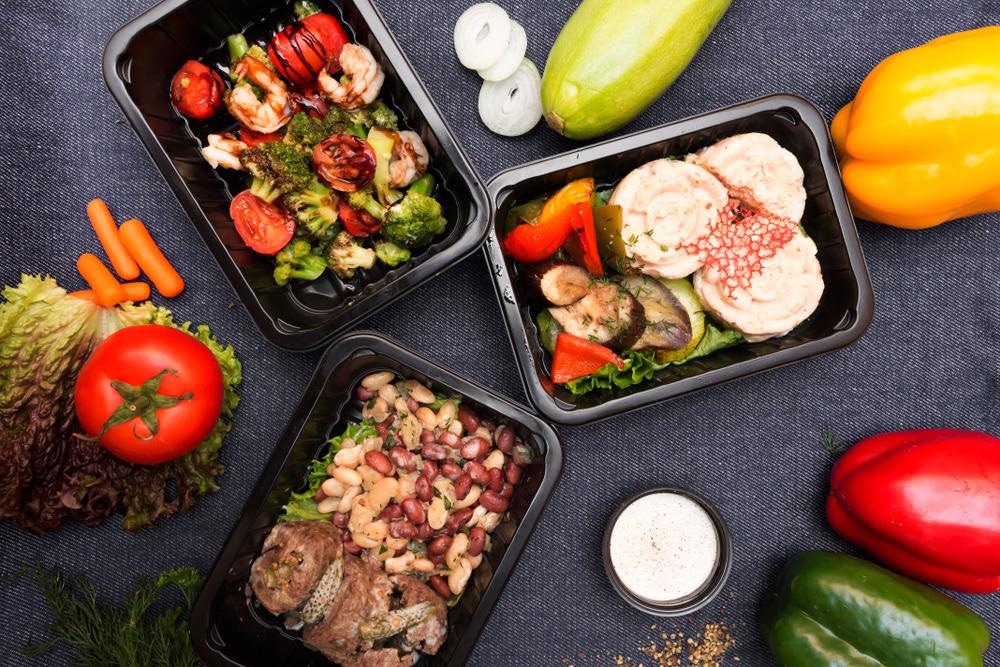Processed goods have become a major food source worldwide. Their convenience over foods that have to be prepared daily at home has created a demand which has grown exponentially over the years. However, these goods are prime targets for insects. A study has been published in the journal Food Packaging and Shelf Life presenting a novel technique to create packaging which offers prevention from insect-based contaminations.

Study: Development and characterization of potato starch/lactucin/nano-TiO2 food packaging for sustained prevention of mealworms. Image Credit: Daniyar Aibekov/Shutterstock.com
Importance of Insect Prevention Packaging
With the ever-increasing availability and utilization of convenient and processed foods, studies on insect prevention-based packaging have become highly significant. This is primarily due to the fact that dry-packaged goods and consumer goods (such as rice, pasta, walnuts, wheat, and flour) are some of the most common targets for insects to contaminate.
As soon as an insect gains access to the contents within the food’s packaging, it is considered contaminated. This can result in permanent damage; therefore, it is critical to keep these insects away.
Insect Prevention Measures
Designing insect-resistant packaging materials is one of the primary techniques to avoid pest contamination and decrease the risks associated with quality.
Plastic-based packaging is now the most readily used packaging method. However, research on sustainable organic materials has become more popular as consumers become more aware of food hygiene.
Recently, essential oil compounds such as onions and garlic have shown strong insect repellent qualities and may be employed in insect prevention packaging. Nevertheless, these oil-based compounds have a strong odor that might interfere with the taste of food.
The price of the essential oils is rather on the expensive side, and their volatility is significant, making it challenging to accomplish long-term pest control benefits.
Conversely, lettuce is a prominent green vegetable that belongs to the Asteraceae family and is high in physiologically active chemicals.
It was discovered that hardly any insects thrive on lettuce leaves. Yet, besides its fundamental nutritional qualities, nothing is understood about the usefulness of lettuce's additional constituents.
Lettuce – Does it Have a Higher Purpose Than Salads?
The lettuce-based extract has been shown to greatly lower the production of reactive oxygen-based species, nitric oxide (NO), and the production of inducible NO synthase and cyclooxygenase-2.
Lettuce has insect repellant properties owing primarily to the lactucin and erucic acid present within the lettuce. These two compounds give lettuce a somewhat bitter taste, but at the same time, damage insects by injuring the insect's internal organs. Interestingly, lactucin displays anti-malarial efficacy against Honduras-1 HB3 clone, a strain of Plasmodium falciparum.
Benefits of Nano-Titanium Oxide
Titanium oxide has recently shown great promise in food conservation. Various studies observed that nano-titanium oxide particles produce shading and anti-ultraviolet capabilities, which may improve food protection while also satisfying basic packaging criteria for antibacterial capabilities. Nano titanium oxide also has great thermochemical stability.
Basis of Current Research
Lactucin is now seldom utilized in the manufacturing of starch-associated packaging for insect prevention. In this work, the team used the advanced cast sheet technique to create a potato starch/lactucin/titanium oxide composite sheet.
The morphological characteristics of the composite sheets were evaluated using scanning electron microscopy, Fourier transform infrared spectroscopy, energy dispersive spectroscopy, differential scanning calorimetry, and X-ray diffraction. Ultimately, the composite sheet’s ability to control contamination of flour by mealworms was evaluated.
Results of the Study
In this study, the team developed an effective insect prevention-based packaging. Researchers associated with the study effectively inserted lactucin into active potato starch/lactucin/titanium oxide sheets made using an advanced cast sheet technique, and the impact of varied nano-titanium oxide and lactucin mass ratios on sheet characteristics was studied.
Through experimental findings, the team of researchers concluded that nano-titanium oxide and lactucin may enhance the architecture, mechanical characteristics, barrier characteristics, antimicrobial activities, pest resistance, and other features of the sheet while enhancing its practicability.
As a result, the team concluded that this innovative composite sheet has significant potential for use in food packaging with long-term mealworm protection.
Disclaimer: The views expressed here are those of the author expressed in their private capacity and do not necessarily represent the views of AZoM.com Limited T/A AZoNetwork the owner and operator of this website. This disclaimer forms part of the Terms and conditions of use of this website.
Source:
Wang, Y., Zhang, H., Zeng, Y., Hossen, M., Dai, J., Li, S., . . . Qin, W. (2022). Development and characterization of potato starch/lactucin/nano-TiO2 food packaging for sustained prevention of mealworms. Food Packaging and Shelf Life, Available at: https://doi.org/10.1016/j.fpsl.2022.100837.